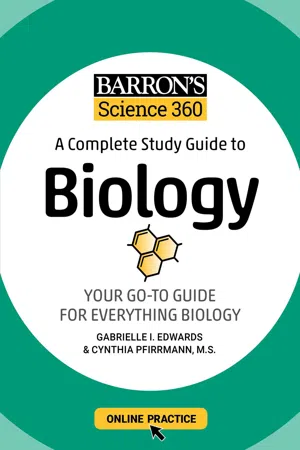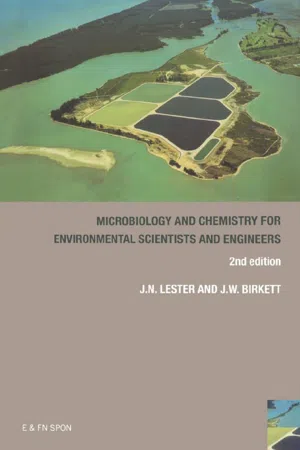Biological Sciences
Classification of Prostist
The classification of protists involves organizing these diverse eukaryotic microorganisms into different groups based on their characteristics and evolutionary relationships. Protists are typically classified into several groups, including algae, protozoa, and slime molds, based on their mode of nutrition, cell structure, and other features. This classification helps scientists understand the diversity and evolutionary history of these organisms.
Written by Perlego with AI-assistance
Related key terms
4 Key excerpts on "Classification of Prostist"
- eBook - ePub
- Stuart Hogg(Author)
- 2013(Publication Date)
- Wiley-Blackwell(Publisher)
III Microbial Diversity A few words about classificationIn this section, we examine the wide diversity of microbial life. In each of the four chapters – Prokaryotic diversity, The Fungi, The Protista and Viruses – we shall discuss major structural and functional characteristics, and outline the main taxonomic divisions within each group. We shall also consider some specific examples, particularly with respect to their effect on humans. By way of introduction, however, we need to say something on the subject of the classification of microorganisms.In any discussion on biological classification, it is impossible to avoid mentioning Carl Linnaeus , the Swedish botanist who attempted to bring order to the naming of living things by giving each type a Latin name. It was Linnaeus who was responsible for introducing the binomial system of nomenclature, by which each organism was assigned to a genus and a species . To give a few familiar examples, you and I are Homo sapiens, the fruit fly that has contributed so much to our understanding of genetics is Drosophila melanogaster , and in the microbial world, the bacterium responsible for causing anthrax is Bacillus anthracis . Note the following conventions, which apply to the naming of all living things (the naming of viruses is something of a special case, which we'll consider in Chapter 10):- the generic (genus) name is always given an initial capital letter;
- the specific (species) name is given all in small letters;
- the generic and specific names are italicised , or, if this isn't possible, underlined .
A taxon is a collection of related organisms grouped together for purposes of classification. Thus, genus, family, etc. are taxons.The science of taxonomy involves not just naming organisms, but grouping them with other organisms that share common properties. In the early days, classification appeared relatively straightforward, with all living things apparently fitting into one of two kingdoms . To oversimplify the matter, if it ran around, it was an animal, if it was green and didn't, it was a plant! As our awareness of the microbial world developed, however, it was clear that such a scheme was not satisfactory to accommodate all life forms, and in the mid-nineteenth century, Ernst Haeckel proposed a third kingdom, the Protista - Gabrielle I. Edwards, Cynthia Pfirrmann(Authors)
- 2021(Publication Date)
- Barrons Educational Services(Publisher)
colonies where each cell carries out its own life functions and where, also, there may be some simple division of labor among the cells in the grouping. An impressive variety of species are classified as protists, and they probably descended from diverse evolutionary lines. The protists themselves represent evolutionary modification and are probably the ancestors of the modern fungi, plants, and animals.Most modern classification schemes divide the Protista into three major groups: the protozoa, or animal-like protists; the fungus-like protists; and the plant-like protists.KINGDOM: PROTISTAAll protists are eukaryotic (they have nuclei and membrane-bound organelles); they may contain single or multiple nuclei; they may be unicellular or multicellular; they may be autotrophs or heterotrophs; they may be stationary or mobile.Animal-like Protists Mastigophorans Protists with flagella TrypanosomaSarcodines Protists with pseudopods AmoebaSporozoa Parasitic protists PlasmodiumCiliates Protists with cilia ParameciumFungus-like Protists Myxomycota Heterotrophic, amoeboid mass called plasmodiumPlasmodial slime molds Acrasiomycota Heterotrophic, separate cells Cellular slime molds Plant-like Protists Euglenophytes Unicellular, photosynthetic, single flagellum EuglenaChrysophytes Unicellular, photosynthetic, chlorophyll a and cDiatoms, golden brown algae Dinoflagellates Unicellular, two spinning flagella, chlorophyll a and cGessneriumMarine algae (seaweed) Unicellular, multicellular or colonial, photosynthetic, cell walls Brown, green, and red algae PROTOZOA, THE ANIMAL-LIKE PROTISTSProtozoa, meaning “first animals,” are one-celled heterotrophs. Species of protozoa number in the thousands. They live in fresh water, salt water, dry sand, and moist soil. Some species live as parasites on or inside of the bodies of other organisms. Reproduction in the protozoans is usually described as being asexual by means of mitosis, but recent research has revealed that many protozoa augment asexual reproduction with a sexual cycle. Usually, the sexual cycle occurs during periods of adverse environmental conditions, and the cell arising from the fusion of gametes (zygote) can resist unfavorable conditions. The thick wall and the decreased metabolic rate of the cyst- Jason Birkett, John Lester(Authors)
- 2018(Publication Date)
- CRC Press(Publisher)
Chapter 3The eucaryotic protists
3.1 Introduction
In Chapter 2 it was stated that the bacteria are the most important group from the public health or environmental engineering standpoint. The microbial world also includes many eucaryotic organisms, however, which fall into three main groups: the algae, fungi and protozoa. These organisms will all be considered together in this chapter. This is not because they share similar characteristics, since the group is very diverse, but because they constitute all of the true micro-organisms with a eucaryotic cell organization.3.2 Algae
The organisms which constitute this group are essentially plant-like. It includes both macroscopic as well as microscopic forms. The name of the group is derived from the Latin word for sea-wrack, macroscopic algal forms frequently washed onto beaches. Most algae are aquatic organisms and they may inhabit fresh or saline waters. They are usually free-living; however, some aquatic forms have adopted symbiotic relationships with marine invertebrate animals (e.g. corals and sponges). The terrestrial species normally grow in soil or on the bark of trees, but some have established symbiotic relationships with fungi to form lichens. These two-membered natural associations form slowly growing colonies in many inhospitable environments and in particular rock surfaces.Some 70% of the Earth’s surface is covered by water and it is probable that the algae fix more carbon dioxide than all the land plants combined. This may not be so readily apparent if one thinks only of the macroscopic algae which are confined to the shore line or shallow water. However, the overwhelming majority of algae are microscopic, unicellular, floating forms which constitute the phytoplankton. Their density is low and they therefore rarely impart any colour to the oceans. However, the enormous volume of the oceans which they occupy makes them the most abundant of all photosynthetic organisms.- No longer available |Learn more
- RogerTim Haug(Author)
- 2018(Publication Date)
- Routledge(Publisher)
CHAPTER 4 Biological Fundamentals INTRODUCTIONThis chapter provides a brief introduction to the biology of organisms responsible for composting, the bacteria and fungi. The discussion should acquaint the reader with sufficient terminology to allow an understanding of the fundamental biology involved in composting. It will not be a detailed discussion from the viewpoint of the microbiologist, but it will stress the energy requirements and overall chemical reactions mediated by microbes.The distinction of living things into plant and animal kingdoms is common to our experience. With the discovery of and experimentation with microorganisms, however, distinctions became less well defined. Microbes seemed to have characteristics of both the plant and animal kingdoms. In 1866 Ernst H. Haeckel, a German zoologist, proposed the kingdom Protista, which included bacteria, algae, protozoa, and fungi. All unicellular (single-celled) organisms and those containing multiple cells of the same type are included in this classification. Viruses, which are noncellular, were not discovered until 1882 and so escaped Haeckel’s original classification. For convenience, viruses are often included in the Protist kingdom. A breakdown of the Protist kingdom into groupings convenient for our discussion is presented in Figure 4.1 .All bacteria and blue-green algae are procaryotic cell types, while other protists and all other living organisms are of the eucaryotic cell type. The distinction is based on differences in cellular anatomy. Procaryotic cells contain a single DNA strand, the nuclear substance is not enclosed within a distinct membrane, and nuclear division is less complex than in eucaryotes. Procaryotes are thought to be more primitive organisms on the evolutionary scale.Microbes of importance in composting include bacteria and fungi. All other groups are of minor significance. It should be noted that some workers in composting include actinomycetes as a separate group distinct from bacteria and fungi. There appears to be considerable confusion on this point, because actinomycetes have been at times classified as bacteria, fungi, and even a separate phylogenetic line. Actinomycetes are filamentous in form like many of the fungi, but they have a procaryotic cell structure like the bacteria. As a class they are active in degradation of insoluble, high molecular weight organics, such as cellulose, chitin, proteins, waxes, paraffins, and rubber. As such, they should be important in composting systems. For convenience they will be considered along with bacteria, although the difficulty of classification should be recognized.
Learn about this page
Index pages curate the most relevant extracts from our library of academic textbooks. They’ve been created using an in-house natural language model (NLM), each adding context and meaning to key research topics.



